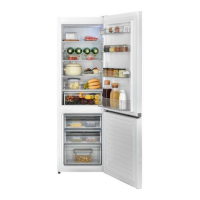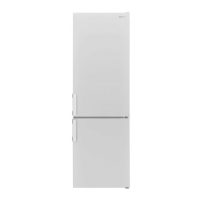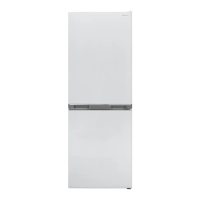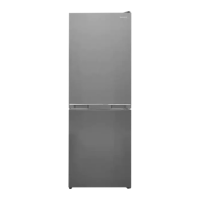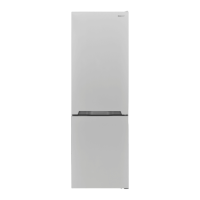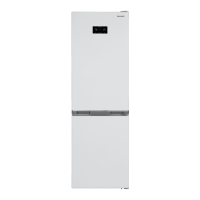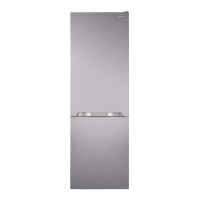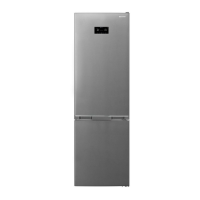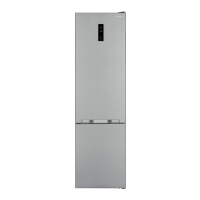EN -14-
CHAPTER -7: BEFORE CALLING AFTER-SALES SERVICE
If your refrigerator is not working properly, there may be a minor problem. Check the following.
The appliance does not operate
Check if:
• There is power
• The mains is connected
• The thermostat setting is on the “•” position
• The socket is defective. To check this, plug another working appliance into the same socket.
The appliance performs poorly
Check if:
• The appliance is overloaded
• The doors are closed properly
• There is any dust on the condenser
• There is enough space near the rear and side walls.
The appliance is noisy
The cooling gas which circulates in the refrigerator circuit may make a slight noise (bubbling sound) even when the
compressor is not running. Do not worry, this is normal. If you hear a different sound, check whether:
• The appliance is level
• Anything is touching the rear of the appliance
• Objects in the appliance are vibrating.
There is water in the lower part of the refrigerator
Check if:
The drain hole for the water is not clogged (use defrost drain plug to clean the drain hole).
Recommendations
• If the appliance is switched off or unplugged, wait at least 5 minutes before plugging the appliance in or restarting
it in order to prevent damage to the compressor.
• The cooling unit of your refrigerator is located at the rear of the appliance. Therefore, water droplets or ice may
form on the rear surface of your fridge due to the operation of the compressor at specied intervals. This is normal,
there is no need to perform a defrosting operation unless there is excessive ice.
• If you do not intend to use your fridge for a long period of time (such as during the summer holidays), set the
thermostat to “•” position, defrost and clean your fridge, leaving the door open to prevent the formation of mildew
and odour.
• If a problem persists after you have followed all the above instructions, please consult the nearest authorised
service centre.
• The appliance you have purchased is designed for domestic use only. It is not suitable for commercial or
common use. If the consumer uses the appliance in a way that does not comply with this, we emphasise that the
manufacturer and the dealer will not be responsible for any repair and failure within the guarantee period.
CHAPTER -8: TIPS FOR SAVING ENERGY
1. Install the appliance in a cool, well-ventilated room, but not in direct sunlight and not near a heat source (such as
a radiator or oven) otherwise an insulating plate should be used.
2. Allow warm food and drinks to cool before placing them inside the appliance.
3. Place thawing food in the refrigerator compartment. The low temperature of the frozen food will help cool the
refrigerator compartment while the food is thawing. This will save energy. Frozen food left to thaw outside of the
appliance will result in a waste of energy.
4. Drinks or other liquids should be covered when inside the appliance. If left uncovered, the humidity inside the
appliance will increase, therefore the appliance uses more energy. Keeping drinks and other liquids covered helps
preserve their smell and taste.
5. Avoid keeping the doors open for long periods and opening the
doors too frequently as warm air will enter the appliance and cause
the compressor to switch on unnecessarily often.
6. Keep the covers of the different temperature compartments (such
as the crisper and chiller) closed.
7. The door gasket must be clean and pliable. Replace gaskets if
worn.
8. Energy consumption of your appliance is declared without drawers
and fully loaded in freezer compartment.
9. For saving energy, do not use volume between the load limit and
the door, along the load limit line. Load limit line is also used in
energy consumption declaration.

